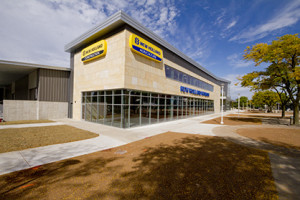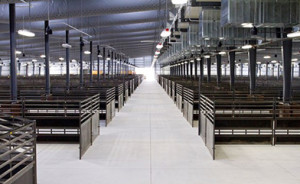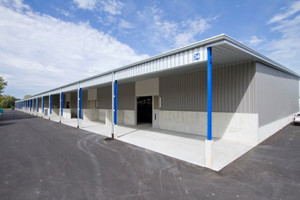New $25 Million Addition to WI Center Hopes to Put Area on the Map For Elite Equine Events in 2015
By: Brittany Bevis
When you think of the top equine facilities in the country, it’s likely Madison, Wisconsin isn’t the first location that pops into your head. Well, the folks at Alliant Energy Center have big plans to change that with a brand new $25 million addition in the form of the New Holland Pavilions.
These multi-use indoor facilities encompass a total of 290,000 square feet, which replace the former nine agricultural barns on the property. Pavilion 1 is 90,000 square feet and has a horse capacity up to 400. In addition to restrooms, showers, concession stands, Wi- Fi and a PA system, it’s heated for year-round use and has covered wash bays. Pavilion 2 is 200,000 square feet, has a horse capacity up to 900, and also comes complete with restrooms, concessions, Wi-Fi and PA, and covered wash bays.
With a combined horse capacity of 1,300, the New Holland Pavilions already have several AQHA/WQHA shows lined up for 2015.
- Lazy Days Circuit- May 13-17, 2015
- Cap Gun Circuit- June 17-21, 2015
- WQHA State Shows- September 3-7, 2015
We had the opportunity to speak with Mark Clarke, Executive Director of the Alliant Energy Center, to find out more about this exciting project.
“We actually started this process two years ago,” Clarke says. “During the design process, we did go around to other facilities to get an idea of what we might want and also what we didn’t want. One of the really impressive things about this process is that we brought the user group on board: the Wisconsin Horse Council, Midwest Horse Fair, and World Dairy Expo. We had some of our biggest users at the table when we were designing.”
Because animal health and safety was a top priority, designers consulted with agriculture and veterinary experts at The University of Wisconsin to help with footing and ventilation. Due to the varying climate, weather concerns also played a factor in design and construction.
“We are at the mercy of Mother Nature, so our facility has to be able to accommodate 95 degrees and humidity and also temperatures below zero and minus 30 degree wind chill. We had to take all of that into consideration,” Clarke says.
“Another important part is the ventilation system. We put in a positive pressure system, which a lot of livestock facilities don’t have. [Instead of] opening the garage doors and hoping the wind blows in the right direction, with this system, we are controlling the air being exchanged mechanically.”
Keeping equine enthusiasts in mind, designers focused on special touches that will appeal to horse show participants and spectators.
“One of the things we knew would be important to the equine industry is adequate wash rack space,” Clarke says. “Also, we have overhangs on the building for unloading to help keep horses and tack out of the elements.”
“We have guest amenities like concession stands, restrooms, and adequate lighting, which are small things that people don’t often think about until they get to the facility. We took all of that into account. Also, if a show decides they want to show and house in the same building, because of the clear space we put in, we can actually put multiple show rings in one building.”
How was this impressive project funded? Clarke describes the effort as a “true private-public partnership.” In addition to receiving a $9 million grant from the state, numerous private organizations contributed to the cause.
“From day 1, this was designed by the user, for the user, and they stepped up to the plate to provide funding,” he says. “This will put us on the map. If you’re having any type of a show, regardless of breed, people now need to consider Madison as an option.”
For more information about the Alliant Energy Center and New Holland Pavilions, visit their website at www.alliantenergycenter.com













